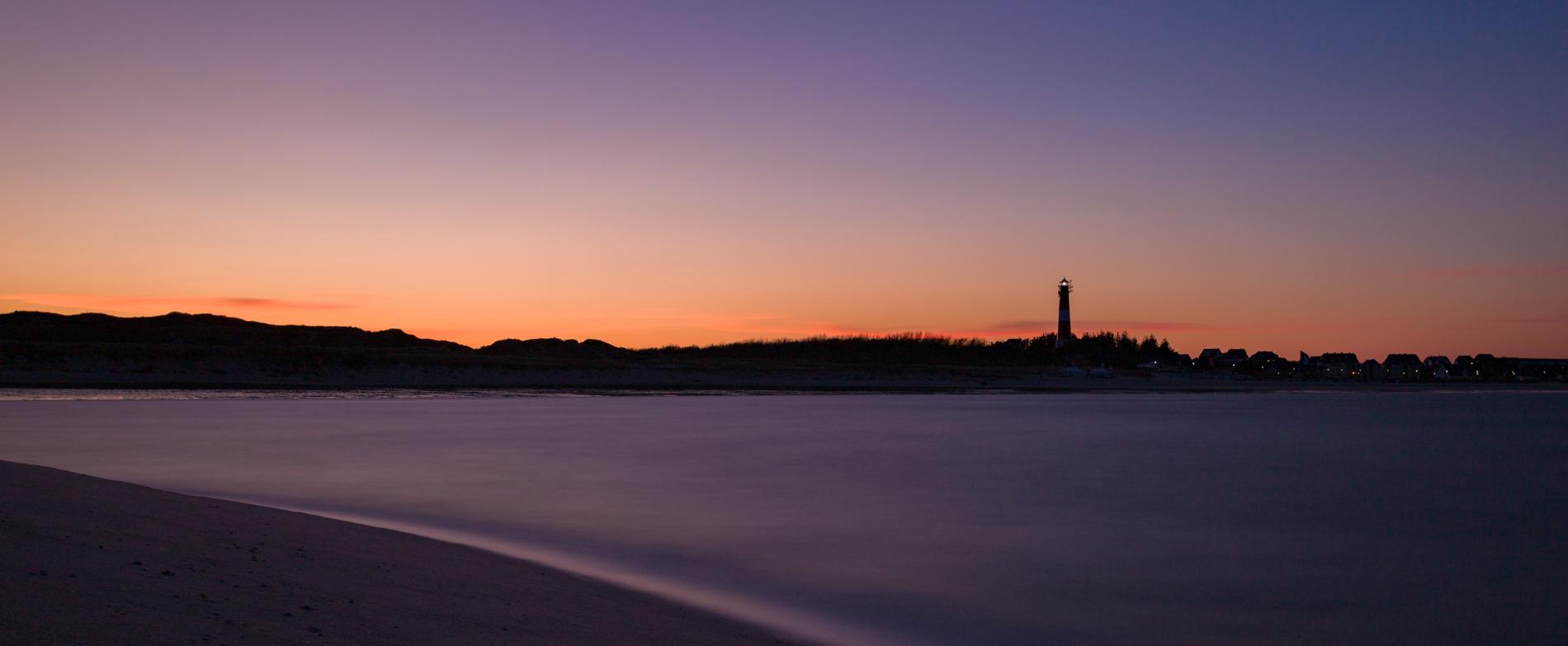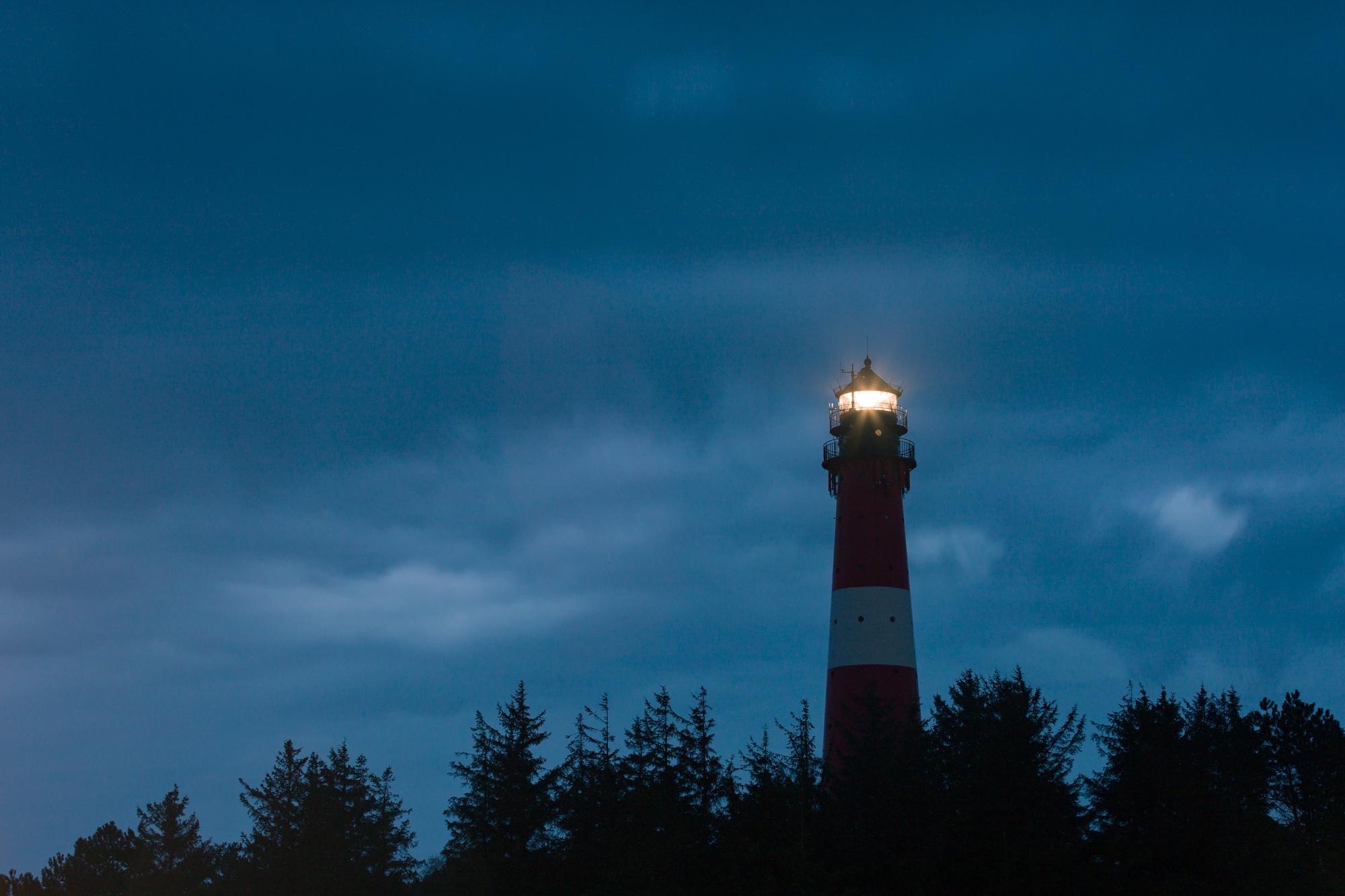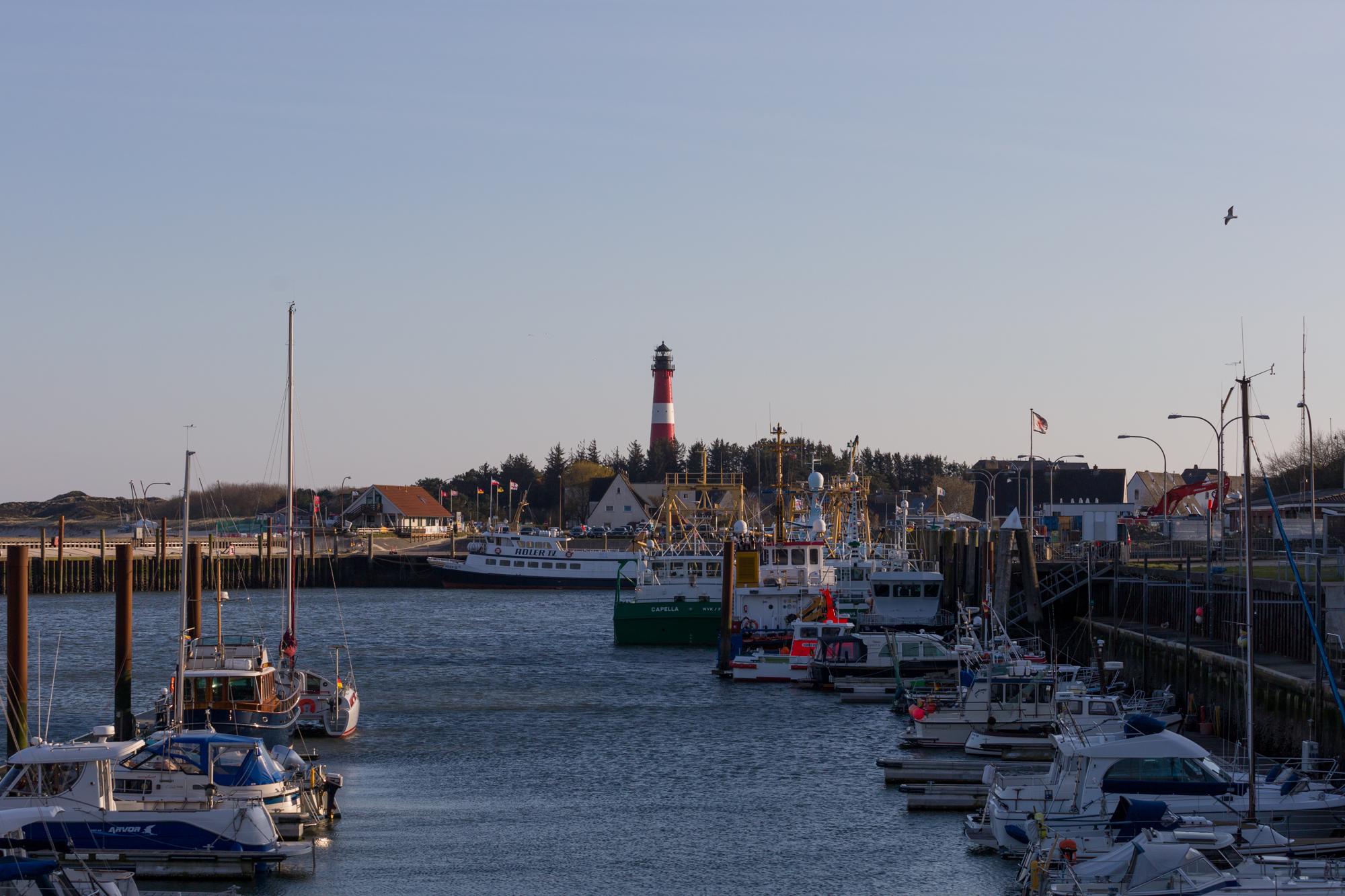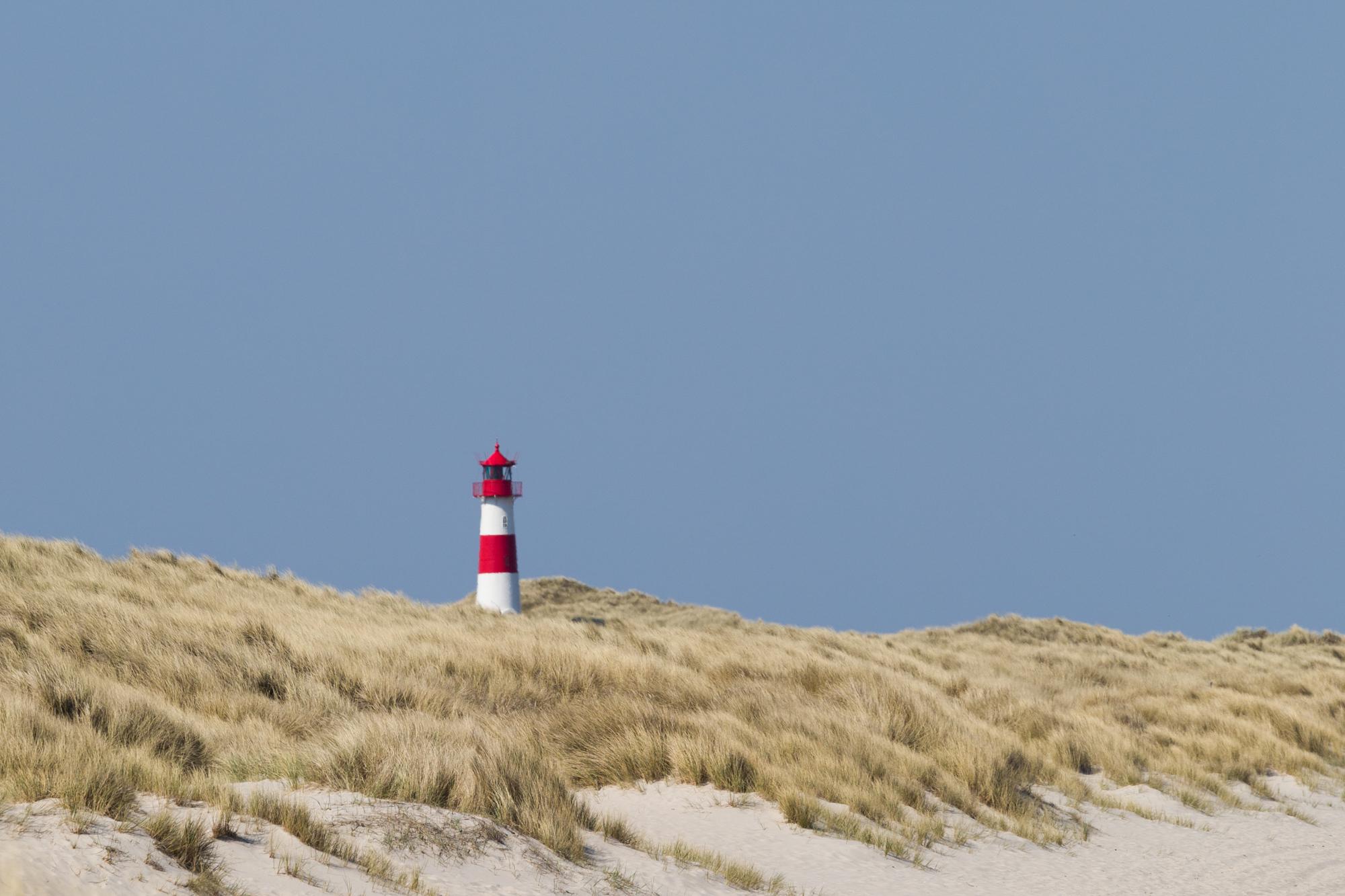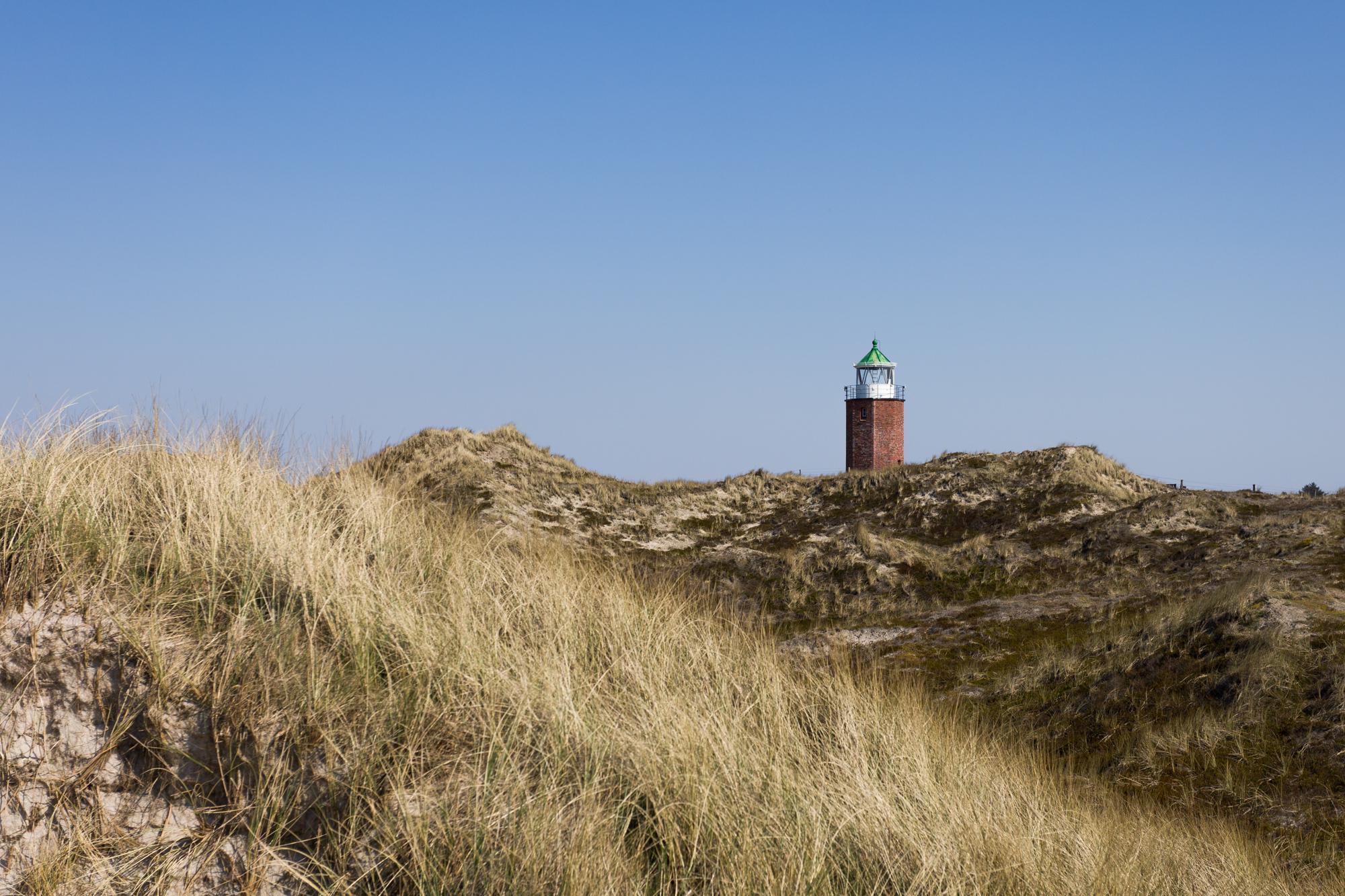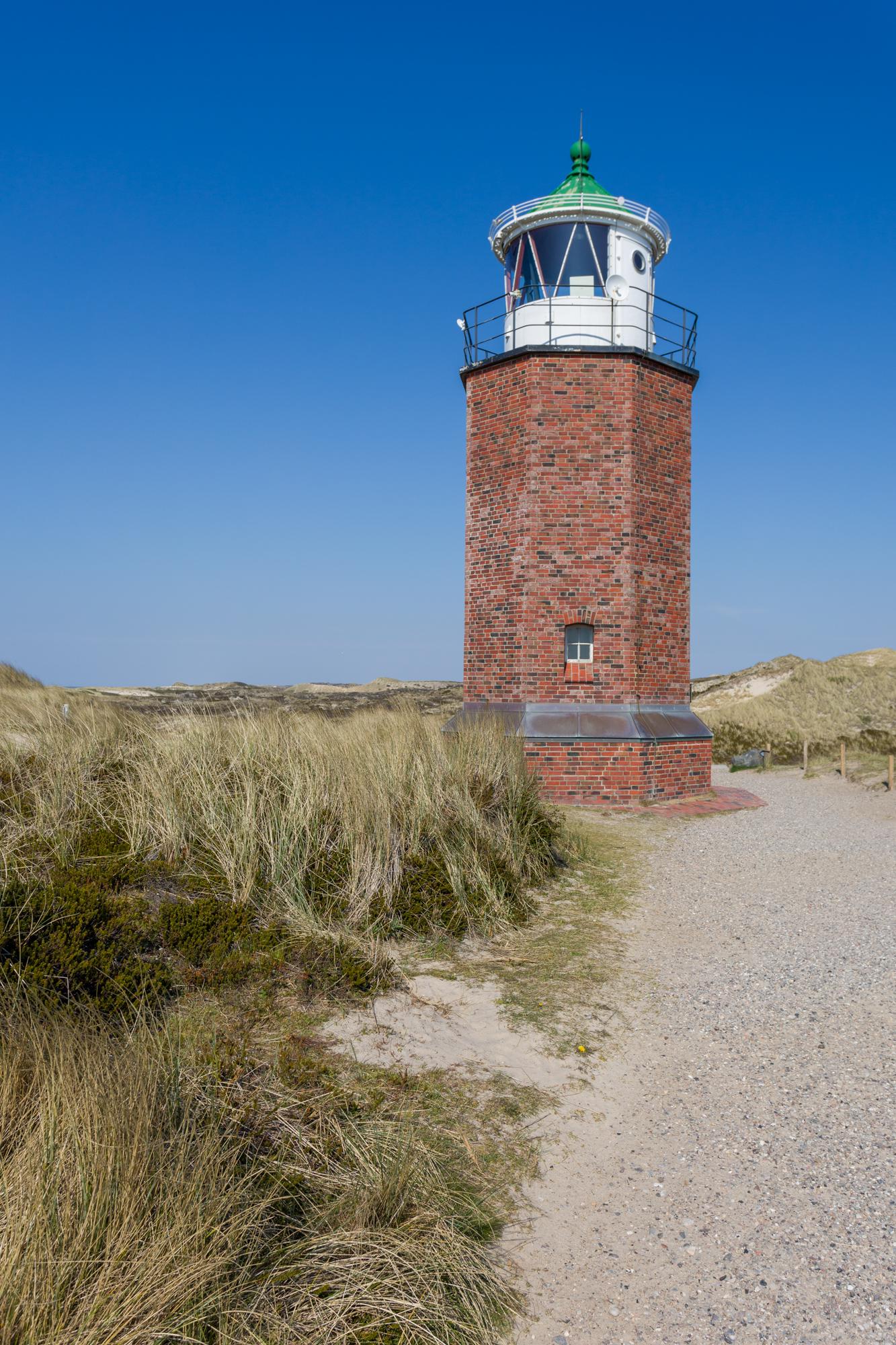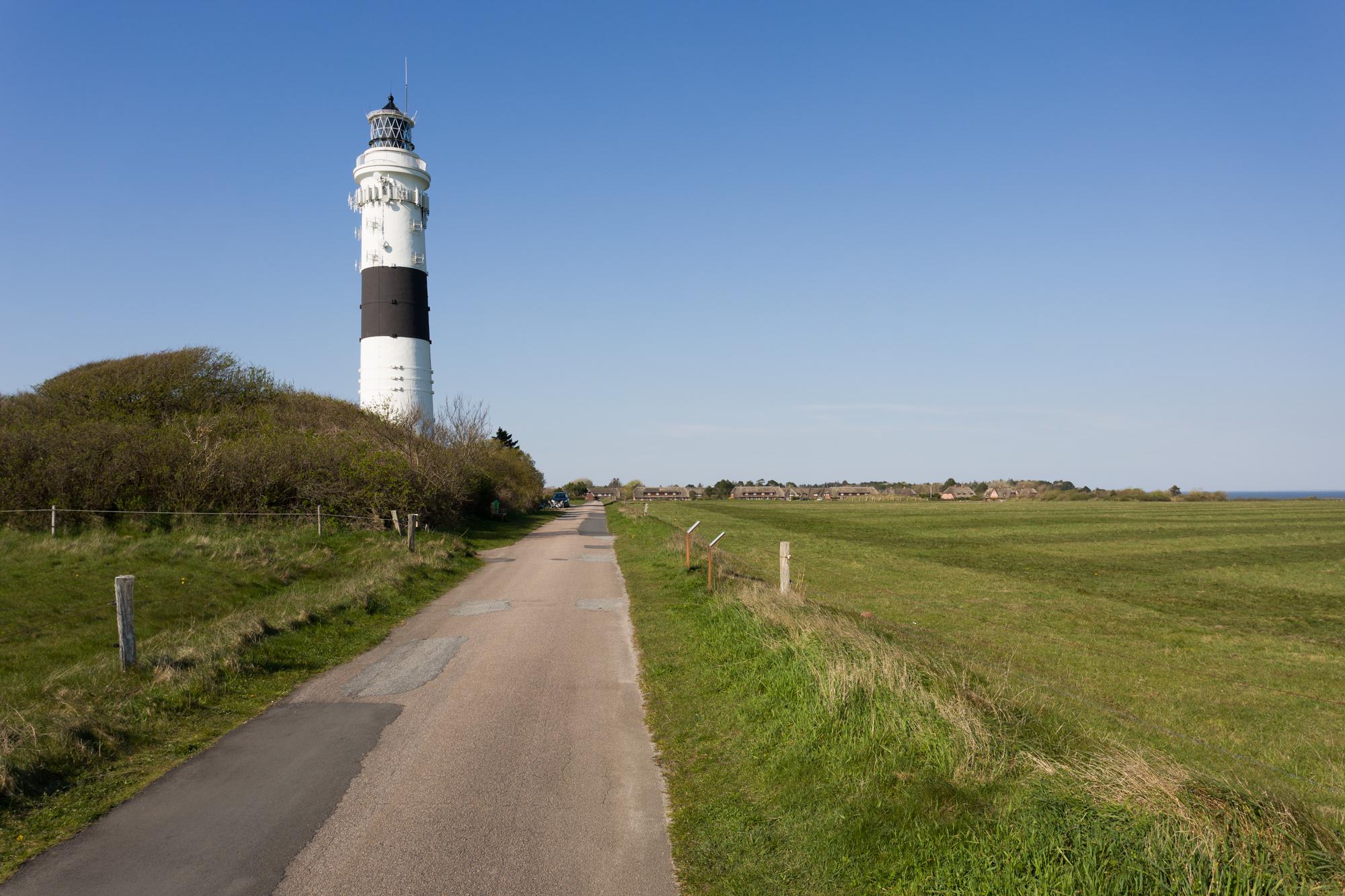Sylt is home to several lighthouses that offer stunning views and photo opportunities. In this blog post, I’ll highlight each of them. You can find a map below to see their locations. Sylt is not a very large island, so you can easily explore it by bike or e-bike. Depending on your stamina, you might even be able to visit all the lighthouses in one day.
In general, most areas on Sylt are crowded, making it challenging to find perspectives without people in them. To get up close, you can use a wide-angle lens. However, you should be wary of distortions when shooting upwards. On the other end of the focal length range, you can use long telephoto lenses to constrain the viewport and eliminate distracting elements. In the evening, you can use long exposure times to smooth out people, making them blurry or even disappear. This is also possible when using an ND filter. Long exposure times require a tripod. Depending on the time of day, a polarizer can be helpful to reduce glare.
Hörnum Lighthouse
Located at the southern end of the island, its beautiful red and white colors and metal construction make for interesting detail shots. It can be visited by appointment. It is visible from quite a few areas around Hörnum, providing you with creative playground. The lighthouse is easily reachable by bus, bike or car.
- A wooden walkway leads to a forest south of the lighthouse. You pass the lighthouse when entering the forest on one side, and again when exiting on the other.
- The southern “cape” of the island extends into the sea. Looking towards the lighthouse you face westwards - towards the sunset. I find, however, that the lights of Hörnum right next to the lighthouse make it challenging to find a good composition.
- From the western beach of the island, a small network of paths and walkway extend towards Hörnum (one of them is called “Süderende”). From there you have a view on houses with traditional reed roofs and the lighthouse.
List Ost & List West
The northern tip of the island features two lighthouses, List Ost and List West. List Ost is fenced off and visitors are asked not to trespass onto the property. List West is more accessible, with a public path leading to it. However, it also attracts more visitors. A large triangle is used by passing ships as a beacon, and together with the lighthouse, it is a common image for postcards available everywhere on the island. You can get here by car or bicycle, as both lighthouses are right next to a toll road. From the road, walkways extend towards the beach every few hundred meters, giving you the opportunity to look for compositions. To protect the nature, it is forbidden to leave these paths. Both lighthouses are surrounded by dunes and beach grass, creating a beautiful contrast. I’d recommend a standard zoom or telephoto lens for both lighthouses.
Rotes Kliff
… or more correctly “Quermarkenfeuer Rotes Kliff” is an octagonal lighthouse that is no longer in use. Close by you can find the Red Cliff, a popular landmark due to its color, which only gets stronger at sunset. The lighthouse itself is not open to the public, but you can visit it easily via a network of paths or a wooden stairway. To capture the entirety of its shape, you can get up close with a wide-angle lens. A telephoto lens, on the other hand, would allow you to capture its details like the charming green roof.
Langer Christian
The Kampen lighthouse is also called “Tall Christian” by the locals. It is situated inland (if you can call anything on this small island “inland”). It is the tallest lighthouse on Sylt and can be seen from almost anywhere on the northern island with its distinct black stripe on white background. The lighthouse is surrounded by pastures and can be easily reached by bike, bus or car. Its adjacency to the town of Kampen and Wenningsted result in images that are much more different than with the other lighthouses.

